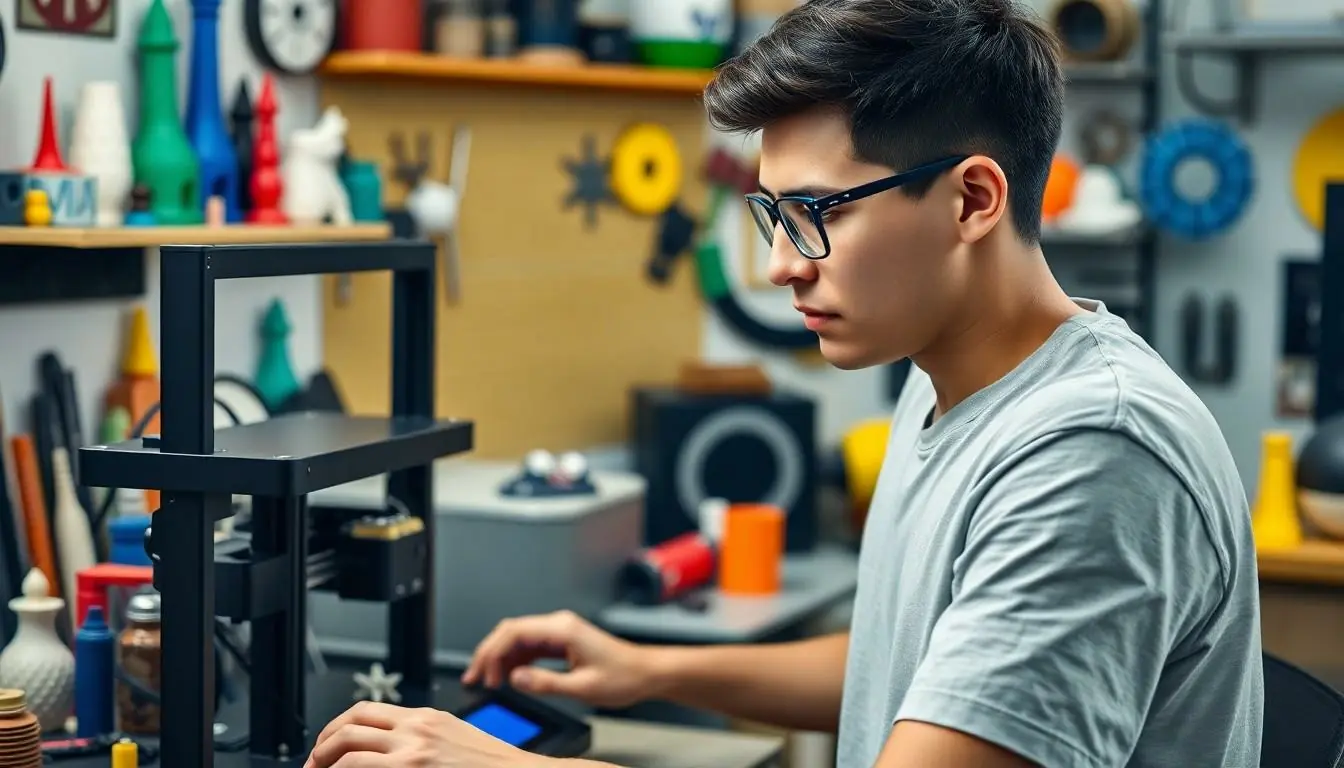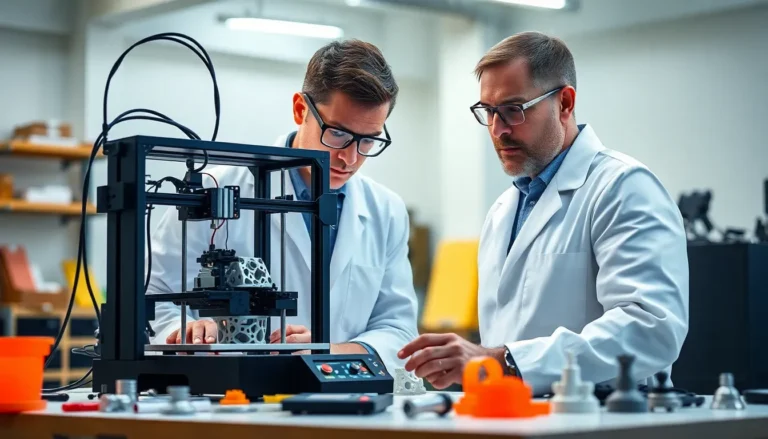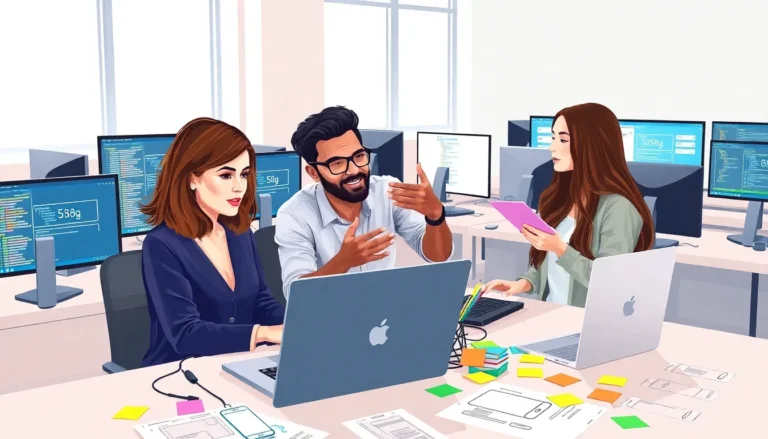3D printing has taken the world by storm, transforming how people think about design and manufacturing. But is it really as easy as it looks? Many dive into the world of 3D printing with visions of creating masterpieces, only to find themselves tangled in a web of filaments and failed prints. It’s like trying to bake a soufflé for the first time—exciting but with a high chance of disaster.
While 3D printing can seem daunting at first, it doesn’t have to be rocket science. With a sprinkle of patience and a dash of practice, anyone can learn the ropes. So, is 3D printing hard? The answer might just surprise you. Buckle up as we explore the challenges and triumphs of this fascinating technology, proving that with the right mindset, even the most complex designs can become a reality.
Table of Contents
ToggleUnderstanding 3D Printing
3D printing represents a revolutionary technology that creates three-dimensional objects layer by layer. It involves converting digital models into physical items, making it accessible to various industries including manufacturing, healthcare, and education.
What Is 3D Printing?
3D printing refers to additive manufacturing processes that fabricate objects from digital files. Objects are built by adding material, typically plastic or metal, in thin layers. Each layer corresponds to a cross-section of the object, allowing for intricate designs and structures. Notably, 3D printing reduces waste compared to traditional manufacturing methods. Rapid prototyping enables designers to test and iterate on products quickly, ultimately enhancing innovation.
Common 3D Printing Technologies
Several technologies power the 3D printing landscape, each serving different needs. Fused Deposition Modeling (FDM) utilizes a filament of thermoplastic, which melts and solidifies to form objects. Stereolithography (SLA) employs a liquid resin that hardens with UV light, creating highly detailed prints. Selective Laser Sintering (SLS) uses a laser to fuse powdered material, allowing for complex geometries and stronger structures. Each technology varies in application, cost, and material compatibility, catering to diverse user requirements.
Learning Curve of 3D Printing

Many newcomers to 3D printing encounter a learning curve. Skills develop over time, leading to effective use of the technology.
Beginner-Friendly Options
Numerous beginner-friendly options exist for those starting their 3D printing journey. Software like Tinkercad simplifies design tasks, offering an intuitive interface for beginners. Basic 3D printers, such as the Creality Ender 3, provide affordable entry points and user-friendly features. Online communities also support new users with valuable resources, including tutorials and forums. These platforms can guide new users through initial projects, easing the transition into more complex tasks.
Advanced Techniques
As familiarity with 3D printing grows, enthusiasts often explore advanced techniques. Slicing software like Cura allows for precise adjustments to print settings, influencing speed, quality, and material usage. Multi-material printing enables the creation of intricate designs that utilize various filaments for improved functionality and aesthetics. Advanced users might also experiment with techniques like resin printing, which offers high-resolution outputs. Furthermore, incorporating post-processing methods such as sanding can enhance the finish of printed items, resulting in professional-quality outputs.
Challenges in 3D Printing
3D printing presents various challenges that can deter new users. Understanding these hurdles is essential for overcoming them and mastering the technology.
Technical Difficulties
Common technical difficulties include calibration issues, software glitches, and print failures. Users often face challenges with printer setup, which may lead to improper alignment of the nozzle or bed. Heat settings and speed adjustments can also impact printing quality, requiring careful fine-tuning. Each printer has unique specifications, making it crucial to consult user manuals and online resources for troubleshooting. Additionally, slicing software configuration plays a significant role in determining print success. Errors in g-code files can cause prints to stop midway or result in low-quality outcomes.
Material Selection Issues
Selecting the right materials presents its own set of challenges. Various filament types, such as PLA, ABS, and PETG, offer different properties that suit specific projects. Users often encounter difficulties in choosing materials that align with the desired finish, strength, and flexibility. Environmental factors like temperature and humidity can also affect material performance during printing. Moreover, compatibility between the printer and the selected filament must be considered. Each material requires specific settings for optimal results, emphasizing the importance of research and prototyping before finalizing options.
Tips for Success in 3D Printing
Achieving success in 3D printing involves leveraging various resources and engaging with supportive communities. Utilizing the right tools makes a significant difference.
Resources for Learning
Online platforms offer numerous tutorials and courses for beginners. Websites like YouTube and Coursera provide videos that cover everything from basic printer setup to advanced design techniques. Books focusing on 3D printing principles can serve as valuable references too. Choosing beginner-friendly software like Tinkercad simplifies the design process, enabling users to create models without extensive experience. Slicing software such as Cura aids in preparing designs for printing, offering features that enhance print quality. Locating and utilizing these resources accelerates the learning curve, making the journey easier and more enjoyable.
Community and Support
Joining online forums and social media groups connects users with experienced printers. Platforms like Reddit and Facebook host communities that encourage sharing insights and troubleshooting advice. Engaging in discussions often reveals helpful tips and innovative techniques. Many local makerspaces and 3D printing clubs provide hands-on support and workshops for further skill development. Forums frequently feature threads on common issues, making it easier to find solutions to challenges faced. Building relationships within these communities fosters a sense of camaraderie that motivates continuous improvement.
Mastering 3D printing may seem daunting at first but it’s a journey filled with potential. With the right resources and a supportive community, anyone can navigate the initial challenges. Embracing a positive mindset allows individuals to turn setbacks into learning experiences. As skills develop over time, the ability to create intricate designs becomes more attainable.
The world of 3D printing offers endless possibilities across various industries. With patience and practice, anyone can transform their ideas into tangible products. Whether it’s through online tutorials or local workshops, the path to success in 3D printing is clear and achievable.



